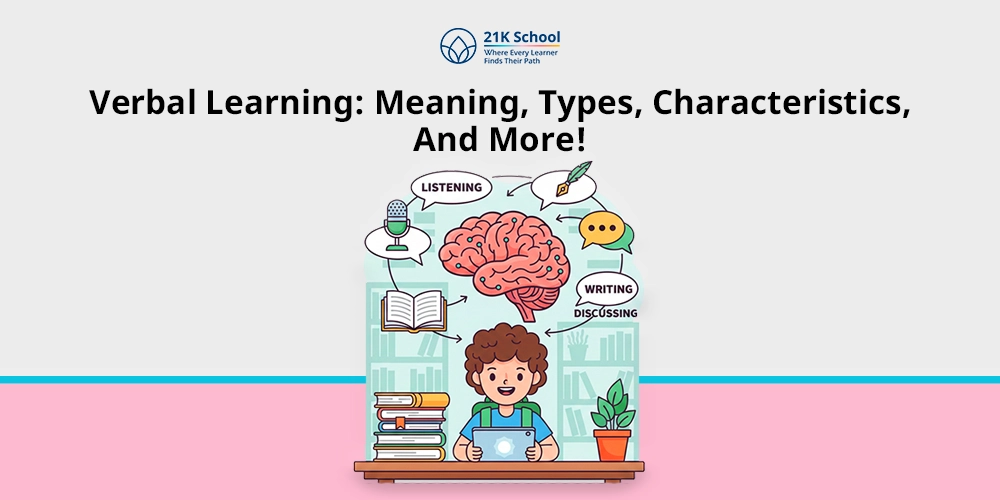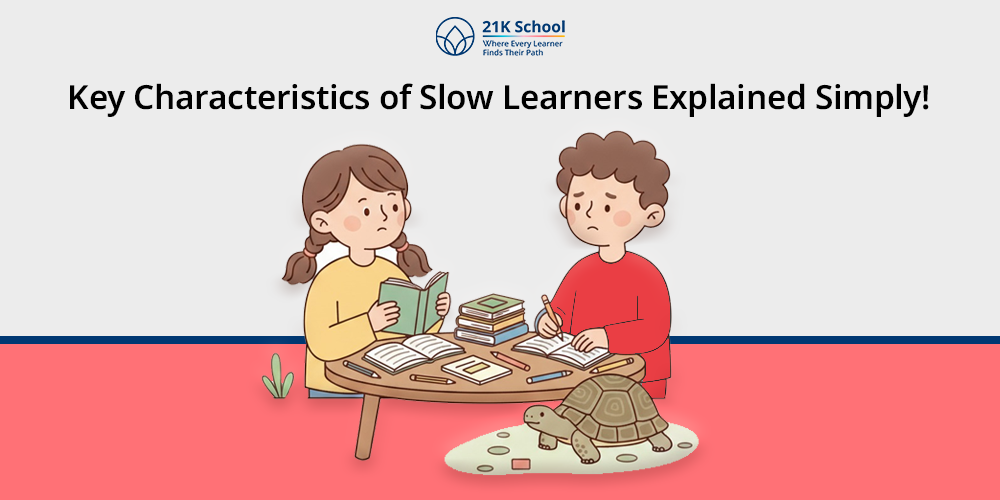
Have you always been curious about the ways to recognize a slow learner but never got a chance to differentiate a slow learner?
Students who have a limited capability of are known as slow learners . The children have specific kinds of problems reading and writing compared to any other student.
The children are unable to learn and gain confidence because of their slow type of learning process. Many people think that slow learners also have a learning disability , but that’s not the truth.
A learning disability can affect any child’s academic performance and ability to communicate effectively. A slow learner can be identified from a few characteristics like poor memory loss for words, loss of aptitude, low power of grasping, etc.
These characteristics can help to find out who are slow learners. Every slow learner needs special learning treatments and motivations to improve his or her studies.
Contents
- 1 Who is a Slow Learner?
- 2 Common Characteristics of Slow Learners
- 2.1 1. Poor Memory
- 2.2 2. Poor Concentration Span
- 2.3 3. Poor Cognitive Development
- 2.4 4. Emotional Instability
- 2.5 5. Poor Attention Span
- 2.6 6. Difficulty with Concepualization
- 2.7 7. Having Difficulty in Following Multi-step Instructions
- 2.8 8. Lack of External Stimulation
- 2.9 9. Poor Self-Image
- 2.10 10. Poor Academic Performance
- 2.11 11. Lack of Imagination and Creative Thinking
- 2.12 12. Poor Reading/Writing and Vocabulary
- 3 The 8 Tips of Teaching and Correcting Slow Learners
- 4 Final Words
Who is a Slow Learner?
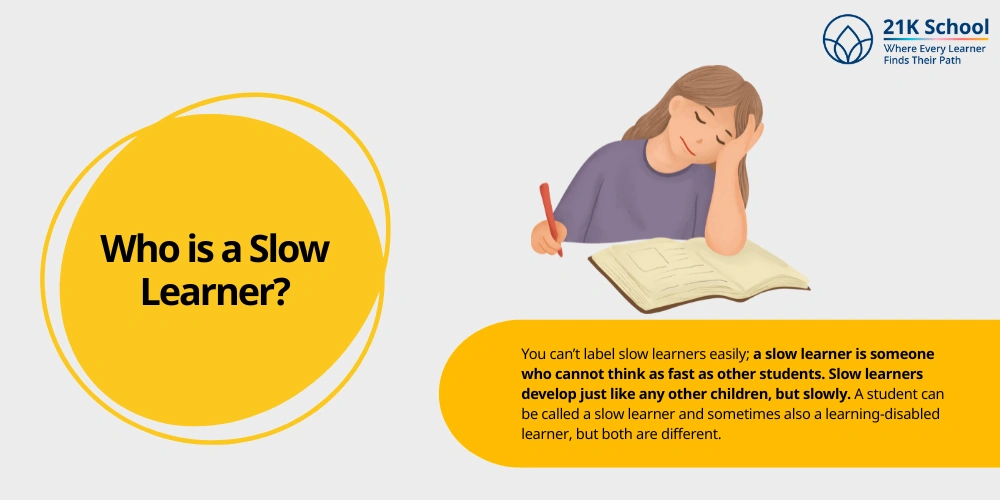
You can’t label slow learners easily; a slow learner is someone who cannot think as fast as other students. Slow learners develop just like any other children, but slowly. A student can be called a slow learner and sometimes also a learning-disabled learner, but both are different.
Learning-disabled is the term sometimes used when the learner has more difficulty but it is not related to the slow learners. Slow learners might be slow in a subject like reading or math or slow in all subjects.
A student who is called a slow learner might learn at a slower rate, but with all the assistance and help, such students can be successful in school or life. Learning support normally includes environmental learning and learning that is followed by another form of early intervention program .
Common Characteristics of Slow Learners

Slow learners can be identified by their total performance regarding grasping knowledge, performance and work load at school and the focus on tasks over a period of time.
The process of thinking, reasoning will also help the teachers in identifying slow learners and the cause of slow learning in them. Some common characteristics of children who are slow learners are discussed below.
1. Poor Memory

A slow learner is mainly characterized by their poor memory. Slow learners not only fail to remember the gathered information, but they also face trouble holding the information for an extended period.
With an abstract and critical thinking skill being very low, retention of the memorisation of concepts is vague for a student for an indefinite memory span.
2. Poor Concentration Span
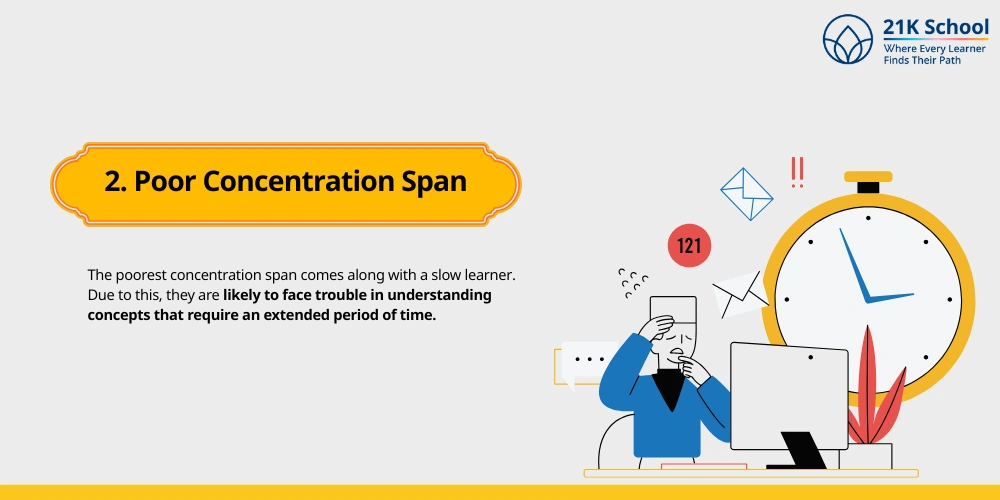
The poorest concentration span comes along with a slow learner. Due to this, they are likely to face trouble in understanding concepts that require an extended period of time.
A below-average concentration span starts raiding your ability to finish or learn any simple task and can be quickly distracted by both external and internal distractions.
3. Poor Cognitive Development
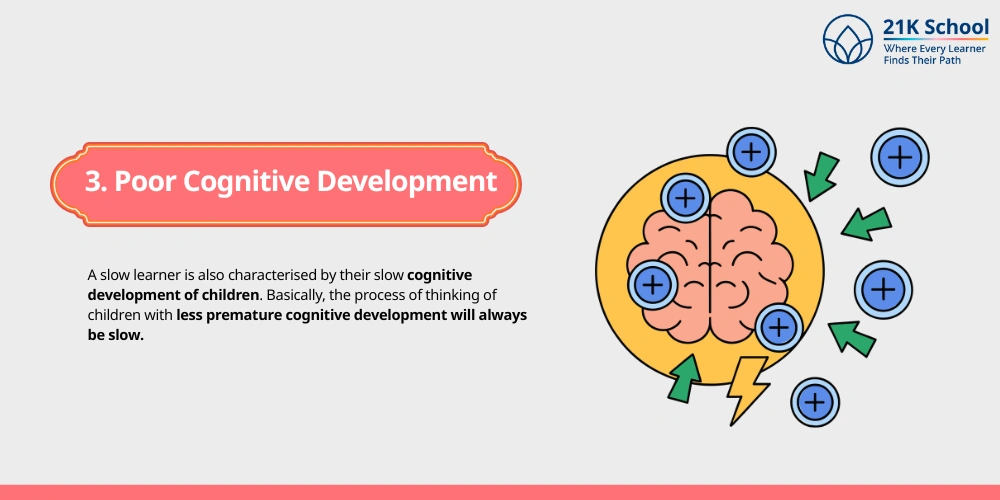
A slow learner is also characterised by their slow cognitive development of children . Basically, the process of thinking of children with less premature cognitive development will always be slow.
A slow learner is the one who has trouble relating newly acquired information and knowledge with the old and already remembered knowledge. The slow cognitive learning capacity will limit the slow learner from moving ahead in their logical reasoning, reading skills, and problem-solving skills .
4. Emotional Instability

The slow learners usually lack emotional intelligence and, as a result, they can quickly get disappointed, irritated, overwhelmed or discouraged. They may not exhibit much happiness and might also reflect some bit of emotional swings.
Emotional instability might further lead the slow learner to withdraw from the social and academic activities, and emotional instability might also lead the slow learner to withdraw from a new common activity.
5. Poor Attention Span

Usually, slow learners might have a shorter attention span or might also have a shorter concentration level. It gets difficult for them to focus on a task for a more extended period.
This further affects the performance of the student and makes them weak students, hence their self-respect gets lowered. The low attention span children cannot focus on new lessons quickly and easily distracts from exams.
6. Difficulty with Concepualization
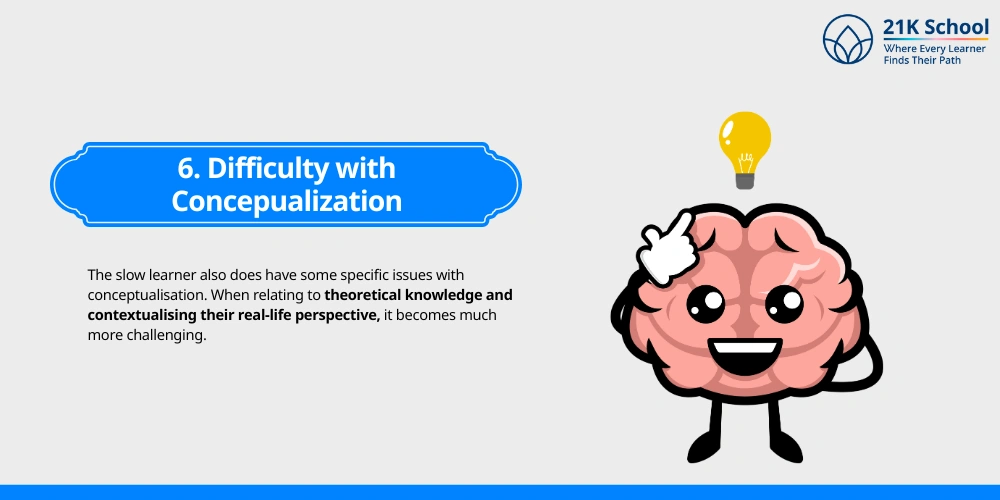
The slow learner also does have some specific issues with conceptualisation. When relating to theoretical knowledge and contextualising their real-life perspective, it becomes much more challenging.
Due to the lack of conceptual understanding, they find it hard to understand the concepts, which focuses on theoretical context.
7. Having Difficulty in Following Multi-step Instructions
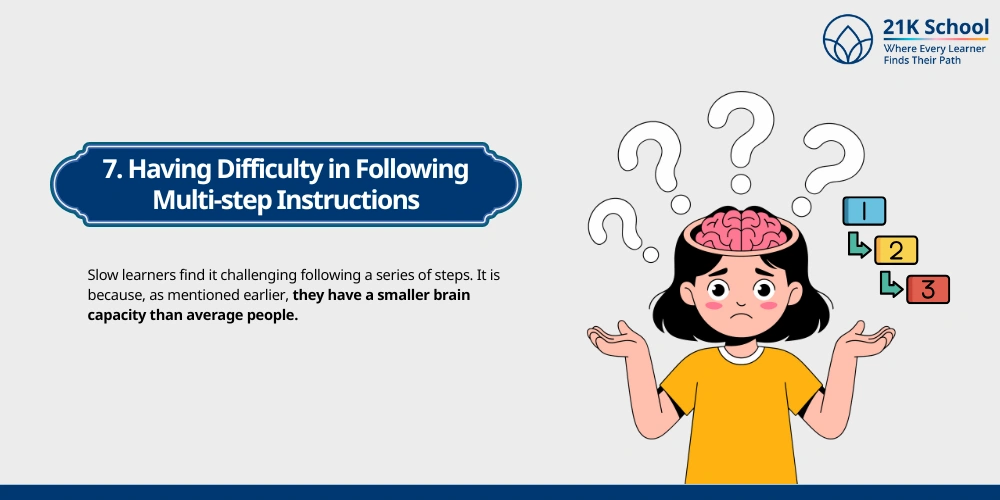
Slow learners find it challenging following a series of steps. It is because, as mentioned earlier, they have a smaller brain capacity than average people.
Stepwise learning methods are hard for slow learners because they don’t remember sequences and steps. Since they cannot follow things in the right order, learning becomes difficult for them and very overwhelming.
8. Lack of External Stimulation
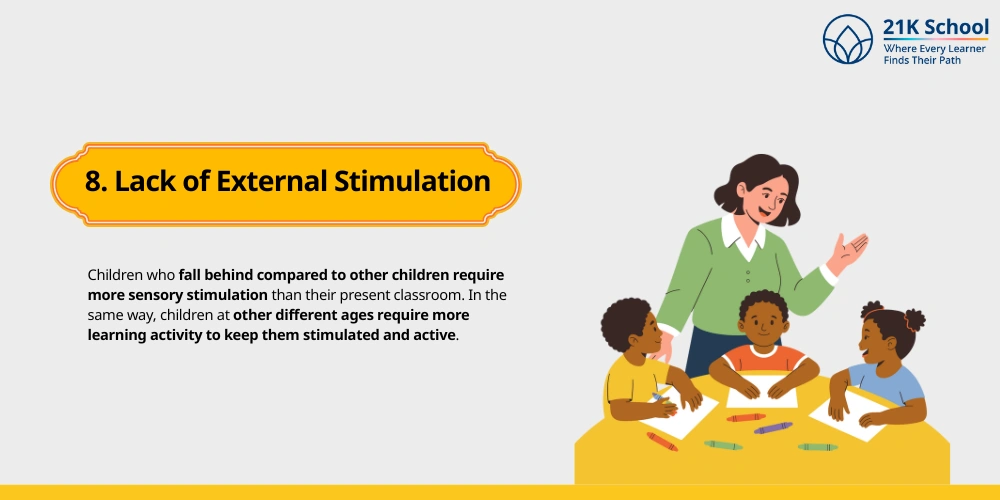
Children who fall behind compared to other children require more sensory stimulation than their present classroom. In the same way, children at other different ages require more learning activity to keep them stimulated and active.
Since slow learners lose interest in a class which is too passive and doesn’t have any stimulation or novelty in the activities and might want something different.
9. Poor Self-Image
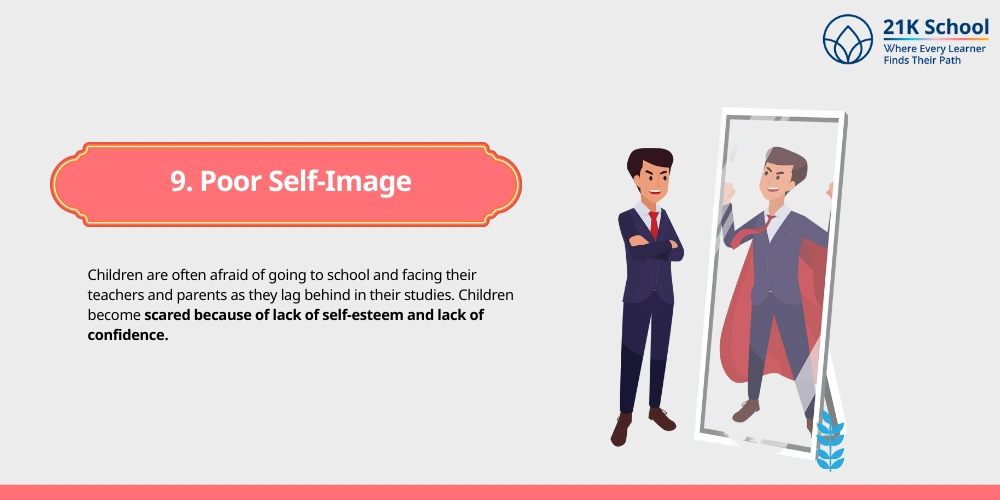
Children are often afraid of going to school and facing their teachers and parents as they lag behind in their studies. Children become scared because of lack of self-esteem and lack of confidence.
Children with their lower self-image are also afraid to cooperate with others. Lack of motivation and slow learning pace are also the reason that slow learners find it hard to communicate with others.
10. Poor Academic Performance
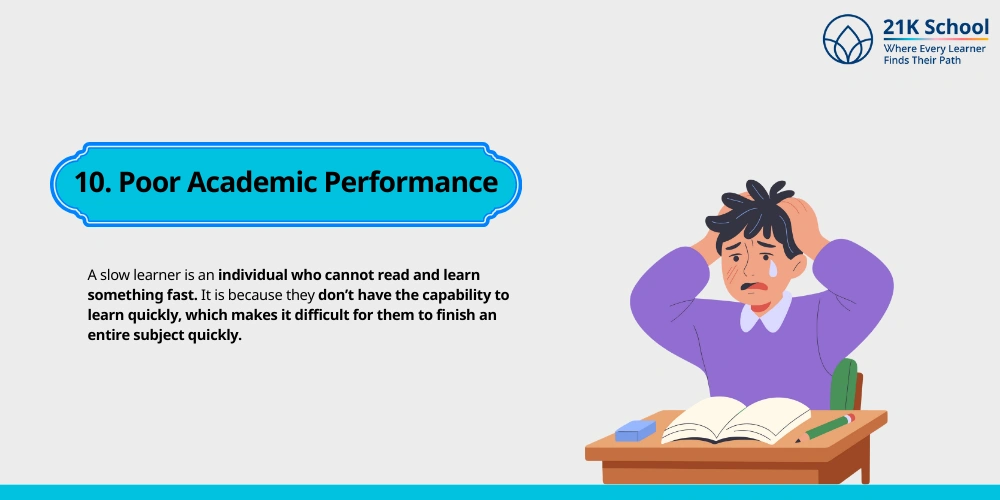
A slow learner is an individual who cannot read and learn something fast. It is because they don’t have the capability to learn quickly, which makes it difficult for them to finish an entire subject quickly.
Now, if they have an inability to read and remember a subject word-to-word and make a mistake that ruins their academic life.
11. Lack of Imagination and Creative Thinking
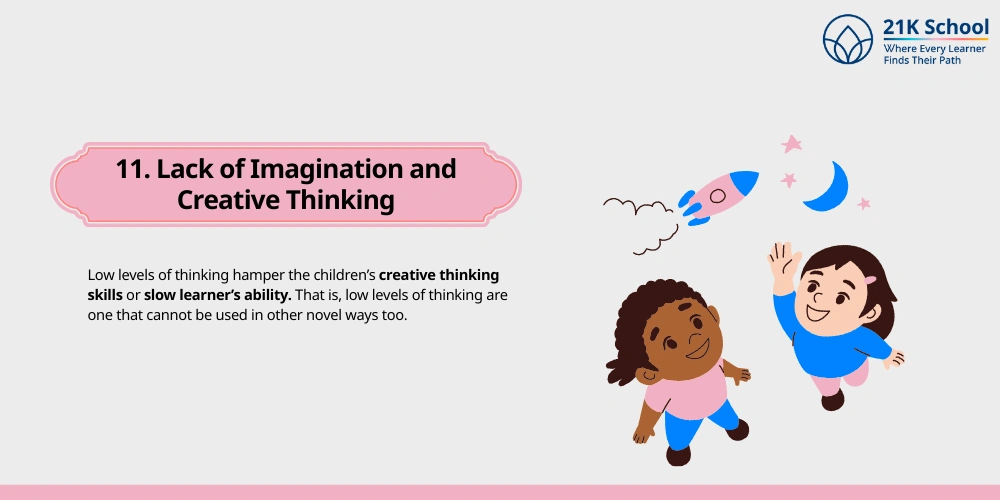
Low levels of thinking hamper the children’s creative thinking skills or slow learner’s ability. That is, low levels of thinking are one that cannot be used in other novel ways too.
It also makes the child less creative and imaginative, which is why it is hard for them to develop any new ideas, see things in their mind, or find any new solution to a problem.
12. Poor Reading/Writing and Vocabulary

It is hard for slow learners to read and write and face problems with vocabulary. Lack of vocabulary skills denies a student’s opportunity in being able to communicate and interact with others.
Slow learners have difficulty in slow processing, due to which they find it difficult to understand any information more quickly.
The 8 Tips of Teaching and Correcting Slow Learners
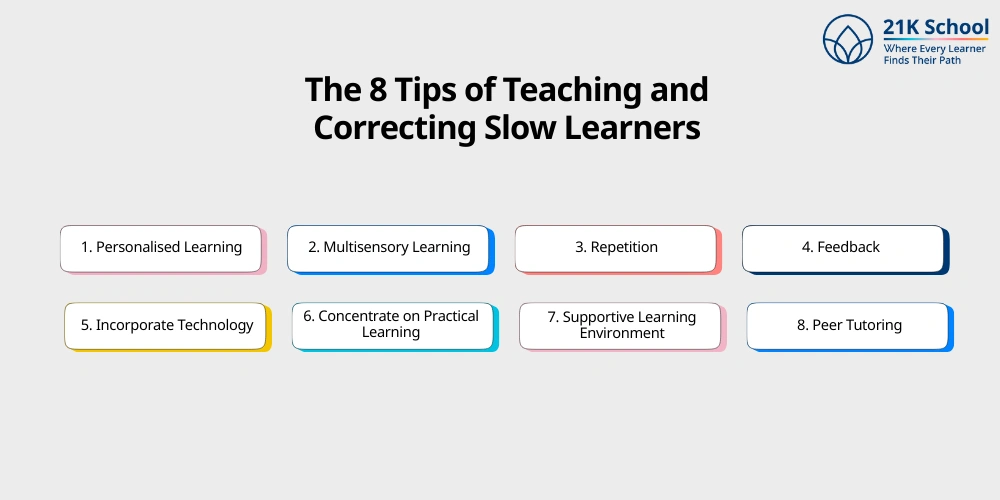
Various methods and strategies that can be introduced to the slow learners, in order to make the slow learners understand and study any information appropriately. By this slow learners are able to study on their own, making education more impactful and lowers burden on learners.
1. Personalised Learning
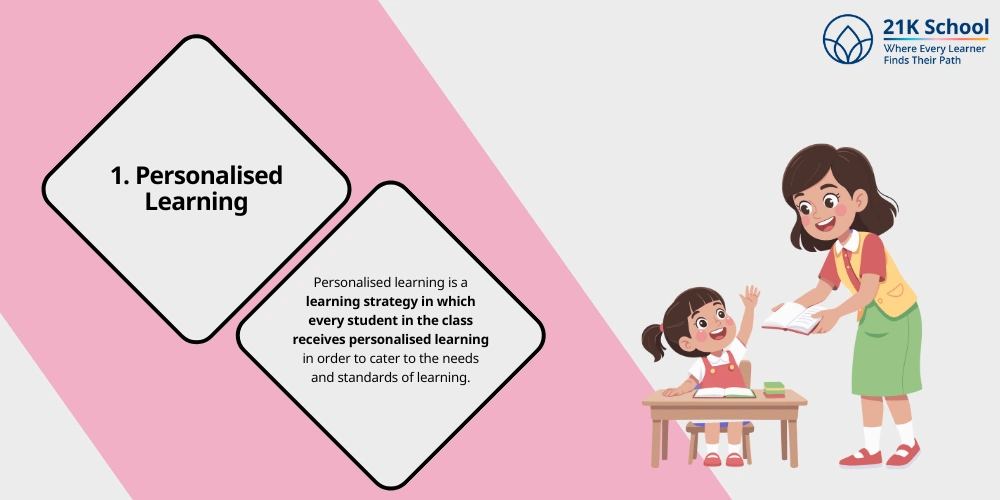
Personalised learning is a learning strategy in which every student in the class receives personalised learning in order to cater to the needs and standards of learning.
Multisensory teaching is a better strategy for slow learners than regular learning as it is accommodating of various learning styles as well as the knowledge is more concrete and accessible to the slow learners.
2. Multisensory Learning
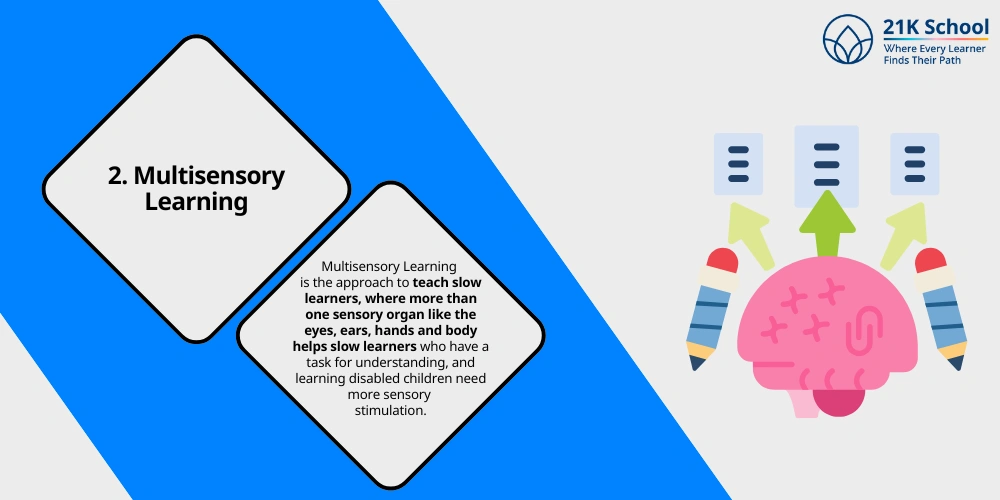
Multisensory Learning is the approach to teach slow learners, where more than one sensory organ like the eyes, ears, hands and body helps slow learners who have a task for understanding, and learning disabled children need more sensory stimulation.
This sort of study method can help the slow learners and learning disabled children to consider the concept more accurately and quickly.
3. Repetition
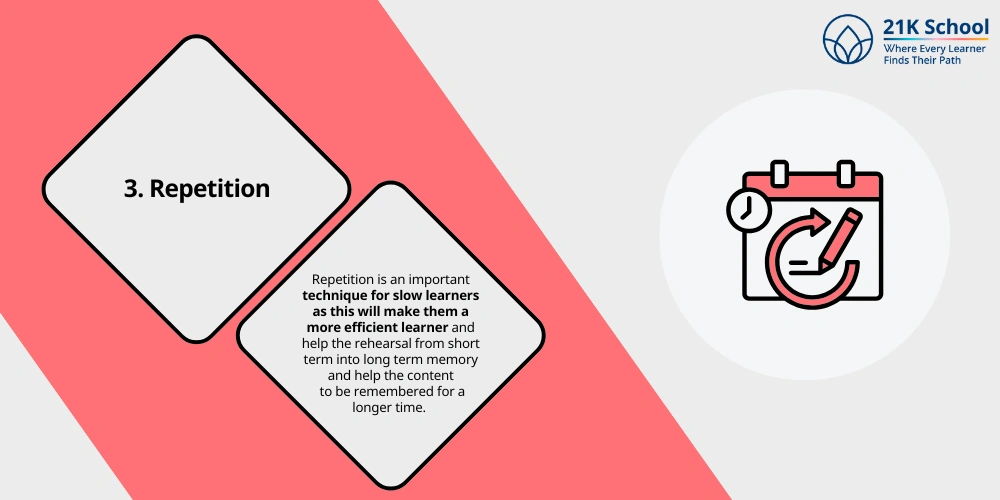
Repetition is an important technique for slow learners as this will make them a more efficient learner and help the rehearsal from short term into long term memory and help the content to be remembered for a longer time.
Therefore, repetition helps the slow learner, in reading and writing the same thing more than once will help the learners and create a more personal connection to the content
4. Feedback
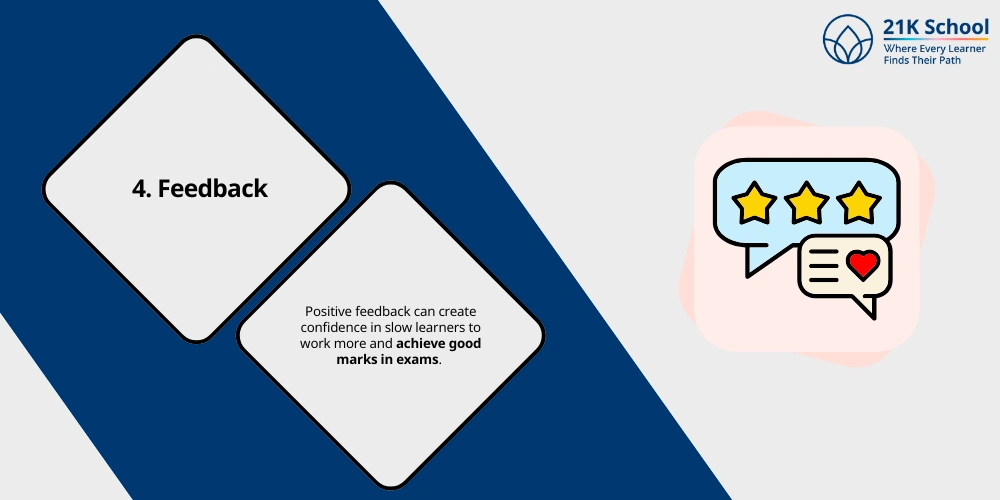
Positive feedback can create confidence in slow learners to work more and achieve good marks in exams . Also, corrective feedback will make them sure of how they can not feel discouraged to keep working.
Creating a consistent positive learning environment will allow slow learners to success, that will cause them to feel safe to try and learn without fearing failure.
5. Incorporate Technology
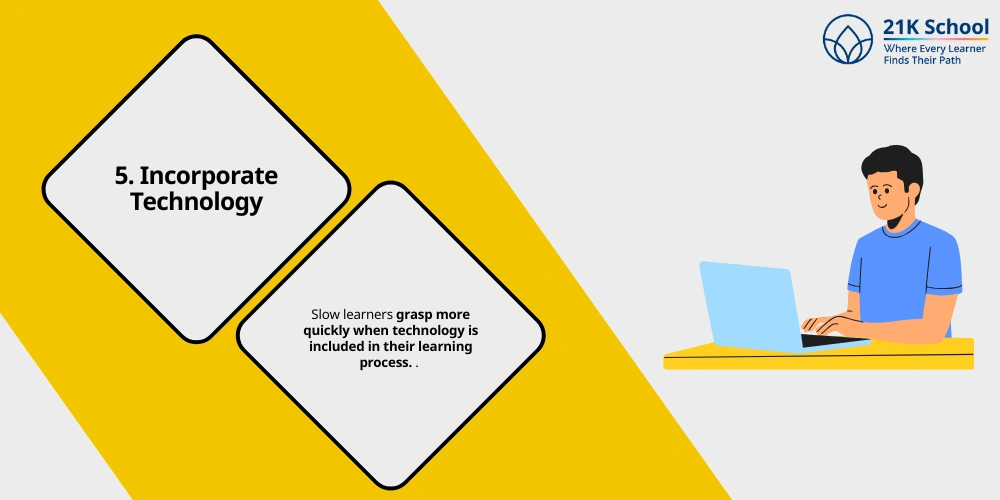
Slow learners grasp more quickly when technology is included in their learning process. They can have active and interactive learning as well as fun in learning , following the technology in education and also adapt to slow learning.
Slow learners can acquire more knowledge and progress with the implementation of technology in education at their pace, and technology also enhances and improves strategy-making.
6. Concentrate on Practical Learning
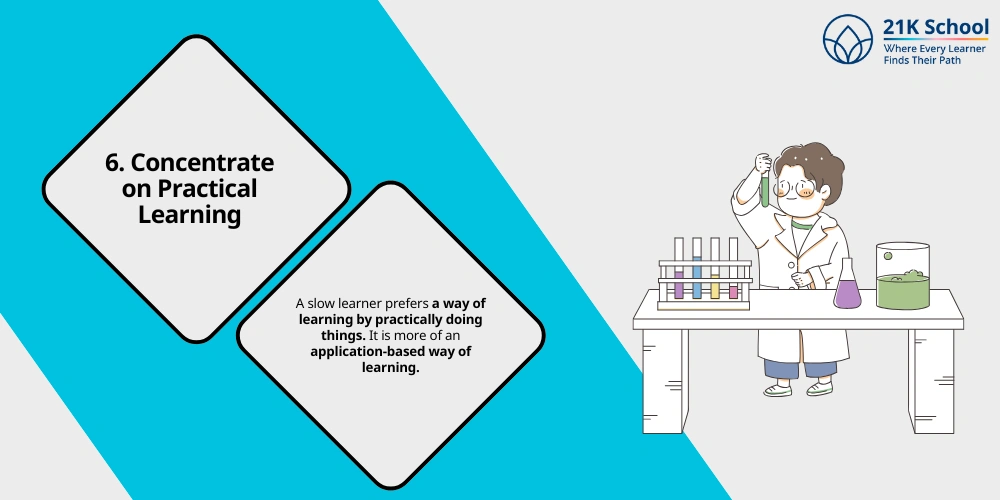
A slow learner prefers a way of learning by practically doing things. It is more of an application-based way of learning. Slow learners can explore theory with the knowledge of practical learning.
Learning by doing and not by only seeing or memorising the information provided on something is what practical learning means. Students can learn and test theories with practical knowledge and understand how to relate and always visualise the theory.
7. Supportive Learning Environment
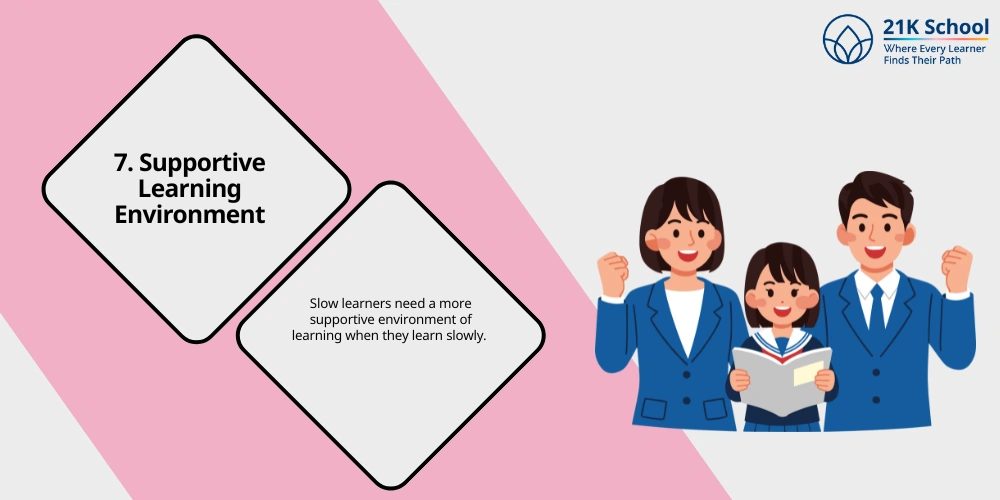
Slow learners need a more supportive environment of learning when they learn slowly. The supportive learning environment is required and how can we support the slow learner for more comprehension.
Students need to feel valued and safe with learning as well as comfortable. Students come up with lots of anxiety and fear of learning. Lack of patience can lead to the injury of students.
8. Peer Tutoring
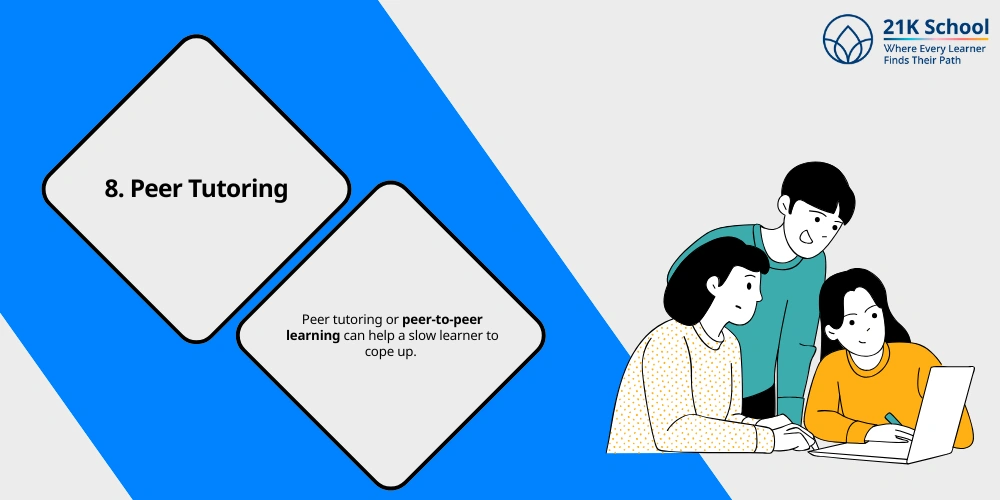
Peer tutoring or peer-to-peer learning can help a slow learner to cope up. Pairing both slow learners with peers can help both the peers develop academically and also socially.lesson by the peers.
This form of instruction to the slow learners can be provided by siblings or classmate’s lessons at times.
Final Words
Usually, the students who will take a long time to learn are known as slow learners. However, these slow learners can perform well if they receive initial help and advice.
Poor memory and low attention span are the special needs of the slow learners. Slow processing speed is also one of the special needs. The following helps the educators to change to the individualised-learning and multi-sensory or hands-on learning
activities.
The feedback helps the learners to learn better; the surroundings should promote positive feelings. With the help of technology and peer learning
, the learners can perform better.

